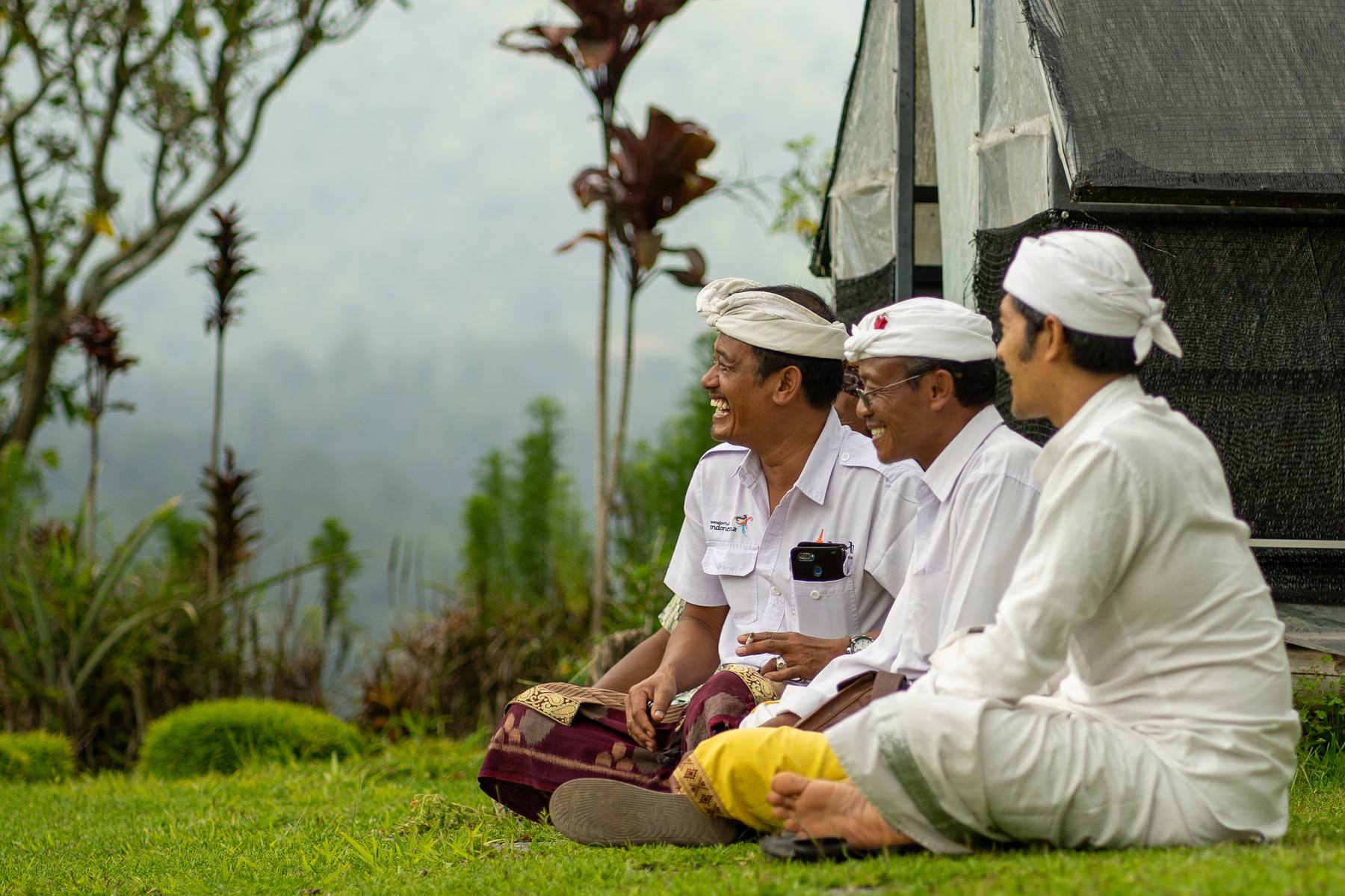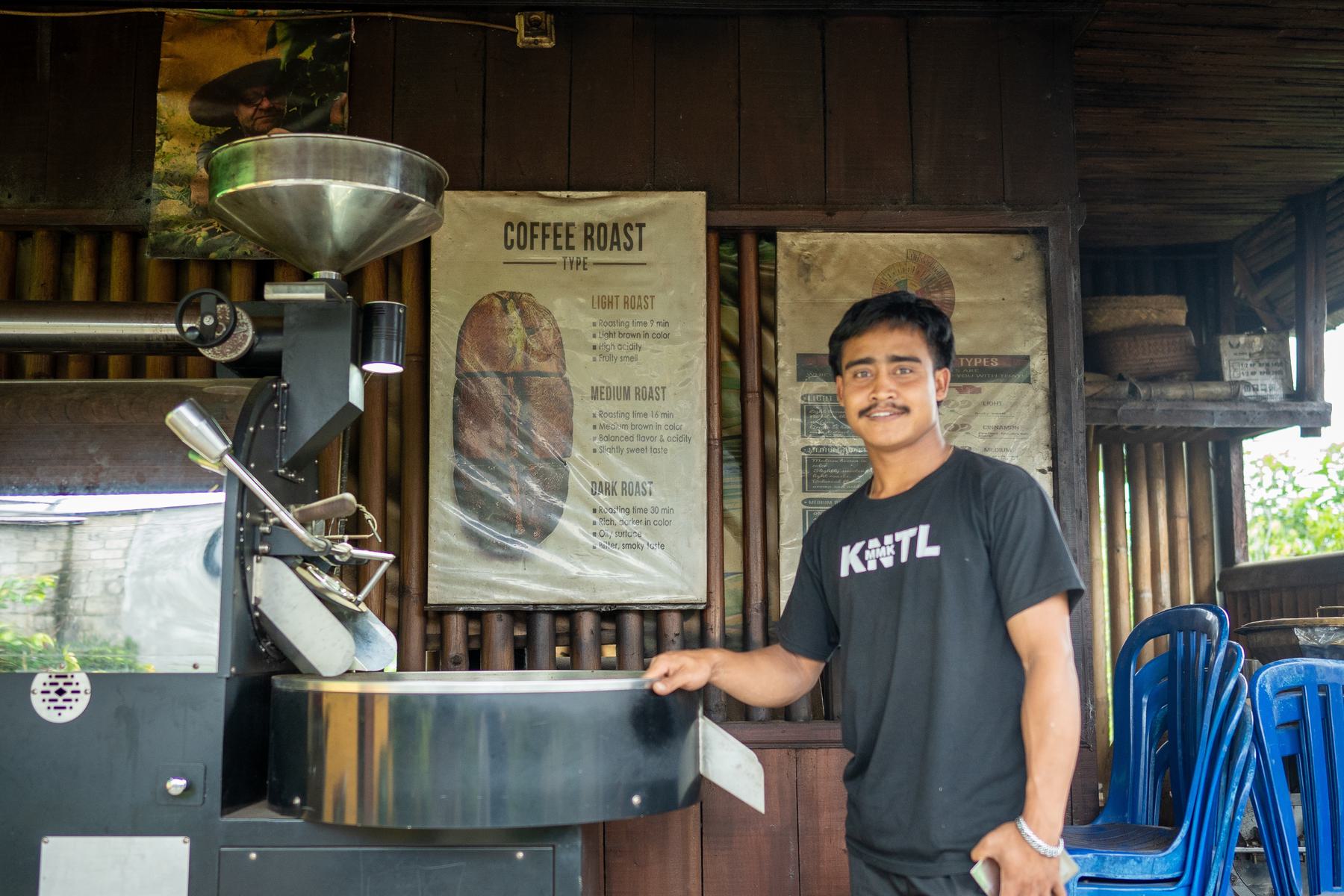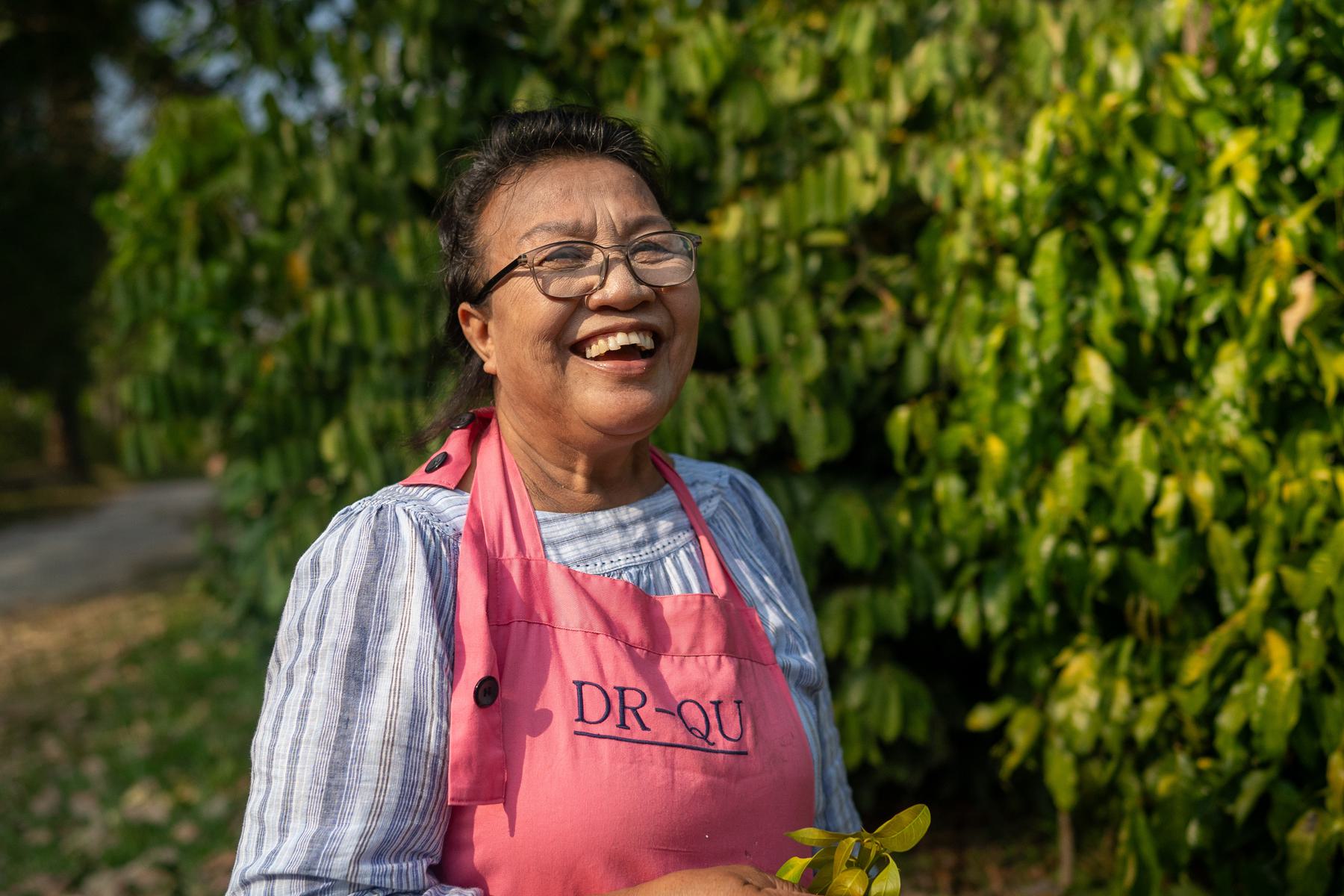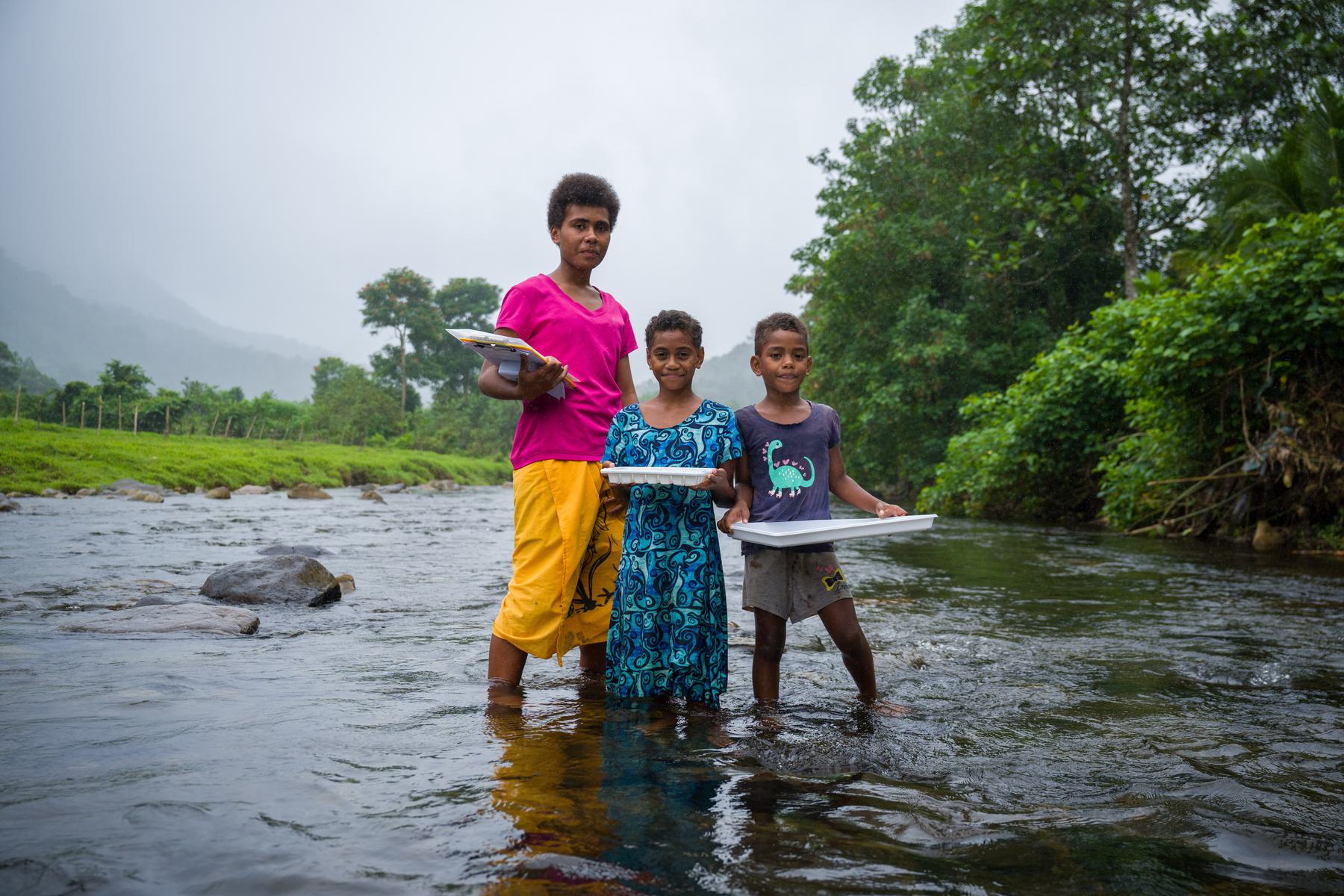
Indonesia is home to the world’s third-largest rainforest, as well as more than 50 million Indigenous people, many of whom live in and protect the forest. For the groundbreaking philanthropy Thousand Currents, supporting these communities holds a key to both sustainable economic growth and building climate resilience.
In Indonesia, Thousand Currents partnered with Aliansi Masyarakat Adat Nusantara (AMAN), one of the world’s largest alliances of Indigenous people. AMAN works to defend the rights of Indigenous communities through policy advocacy, land mapping as a way to delineate ancestral domains, and working with members like the coffee farmers of Catur Paramitha in the highlands of Kintamani, Bali. There, farmers grow coffee beans using traditional sustainable farming practices—all organic and fed with harvested rainwater. AMAN supports the community through Gerai Nusantara, an Indigenous-led marketplace for Indigenous goods, like coffee and artisanal crafts, among other programs.
Since its founding in 1985, Thousand Currents has transformed traditional philanthropy by empowering locally led organizations that are often overlooked by mainstream funding sources. Focused on social justice, environmental sustainability, food sovereignty, and economic justice, Thousand Currents invests in the leadership of women, youth, and Indigenous communities who are directly affected by issues like climate change, inequality, and displacement.

Waverley Street spoke with Solomé Lemma, President and CEO of Thousand Currents, to learn more about its work in Indonesia and worldwide.
Waverley: Can you tell us about your background and how you came to this work?
Solomé Lemma: I was born in Ethiopia in East Africa, and I came to the United States when I was 11. I was raised in Ethiopia during tumultuous times. I was young, but I knew I wanted to go back home and do something to help, and that shaped my experiences and my education. I went to school to study international development and to go back to Africa and do the work. And I did that with some large organizations at the beginning of my career.
I saw firsthand that actually, communities are doing their own work. They're doing the work of change making, but they just don't have the resources or the visibility. And so I thought, I want to figure out who's making decisions about how resources flow, and make sure that communities have the resources they need to build the futures that they want. And that's how I ended up in philanthropy.
Waverley: How do you describe what Thousand Currents does to a layperson?
Lemma: We back the change-makers—those individuals and their organizations that are tackling some of the most pressing issues of our time, like the climate crisis, like food insecurity, like economic inequality, which we know are all so connected. These grassroots groups and movements are led by Indigenous people, women, and young people from the community, and they have very specific ideas and strategies for how they're solving these challenges that we're facing.
We move money that is unrestricted, which allows movement partners to do what they want through their own visions and strategies that are long term, because change takes a long time. We’re with our core partners for about 10 years, and we also know support goes beyond money. It's about network building, alliance building, relationship building. We connect our partners to each other, to donors, to key strategic and policy spaces that help them succeed in their work. We're bringing them together so that they can learn from one another, strategize together, and maybe even collaborate together.
We're a nonprofit organization, so we raise money to be able to provide the financial and non-financial support we give to our partners. We work very closely with our philanthropic partners, our donors, to make sure that we're learning together and that we're moving together.

Waverley: Can you share more about your work in Indonesia and the partnership with AMAN?
Lemma: We have partners in different parts of the world—Africa, the Pacific, and Latin America—and AMAN is one of our partners in Indonesia that we are so excited about. Their work is centered around protecting the identity, lands, and livelihoods of Indigenous people in all ways. They work with about 2,400 member communities and reach 20 million individuals. They are huge, but also very grassroots. They’re a great example of how sometimes, when we hear about grassroots, we tend to think small, localized, but this is grassroots at scale.
One member of this vast network is Catur Paramitha, which is an Indigenous community in Bali that uses sustainable farming practices and traditional ecology to produce coffee. They embrace ecological practices like rainwater catching, natural terracing for irrigation, companion planting for pest control, and so on, that are good for the environment while they produce a product that's quite beloved by the community.
They're one example of one community that's connected to this vast national network of Indigenous peoples who are working on climate through multiple strategies. For example, a majority of members are working on preserving rainforests and key biomes that need to be preserved. They are agroecological and regenerative farmers, and then they have coffee producers who are producing this product and increasing livelihoods at a local level, showing that we can connect community, climate, and economy in powerful ways. That has significant impact. We also know Indigenous communities use about 20% of the world's land but preserve 85% of its biodiversity, so AMAN and its community members are a pivotal part of that work.

Waverley: How did you approach the collaboration with AMAN? What are the ways you work with them, besides supporting them financially?
Lemma: Our approach with AMAN, as with all of our movement partners, is grounded in trust and flexibility. We’ve heard from AMAN that the reason our partnership with them is so unique is that we don’t require them to submit a lengthy proposal or elaborate financial report, and we offer unrestricted funding—which is critical and, unfortunately, rare. This is an issue that comes up time and again, because about 99% of funding to Global South organizations is restricted. Organizations like AMAN don't receive flexible resources from most funders to invest in their core operations, or to innovate and experiment. We provided that flexible, core support that they need.
AMAN actually was inspired by our practices and told us they started using them as a model for how they do their own work when they recently came together with other Indigenous organizations to create the Nusantara Fund, which is an Indigenous-led fund that just recently got direct support from Waverley Street Foundation. [The fund was created by three Indonesian movement organizations: AMAN, KPA (Consortium for Agrarian Reform), and WALHI (Indonesian Forum for the Environment).] Their focus areas are Indigenous-led climate, ecological, and livelihood initiatives that are at the micro-level, at the community level. And they told us that the practices they use in Nusantara were inspired by Thousand Currents. They saw what a funder and community partnership that's rooted in solidarity and learning and mutual support could look like, and they felt like, well, we could do that directly within our community too.

Waverley: How did Thousand Currents at its inception set out to change how philanthropies work?
Lemma: Thousand Currents was started with a bold vision by a group of people that came together at a time when they saw that ideas of international development and philanthropy were really topdown and externally driven. [They] said, we actually should be moving resources directly to communities, and we should be learning from them and learning with them. At that time, Thousand Currents’ approach was totally innovative; it was one of the first champions of this type of social justice philanthropy, which didn't exist before.
We started our donor education program, the Thousand Currents Academy, [as] a way for us to invite those involved in moving resources—whether they are donors, working at a foundation, philanthropic advisors, or so forth—to come and learn from Global South communities and leaders about what kind of solidarity-based relationships we can establish to help improve the quality of our work and philanthropy, but also to make sure more resources reach frontline communities in the Global South.
Right now, only 10% of global giving goes to local organizations. Ninety percent is going to external organizations, and close to 99% of that funding is restricted, which means we're tying their hands, and they're not able to innovate, adapt, change, and invest in their visions. So there's so much work to be done in how we fund work globally, and how we think about change and success globally.
Waverley: What inspires you in your work?
Lemma: Our partners, our movements; they dare to imagine and build every day against all odds, and whether they fail or succeed at that, their ability to imagine a new way of being with each other and with nature is absolutely inspiring.
My kid is an 8-year-old, and every day, through his own evolutionary growth, I see the power of humanity and the power of what we can do, what we can create together, and the role [young people are] going to play in our future.


